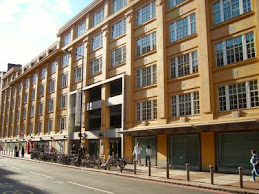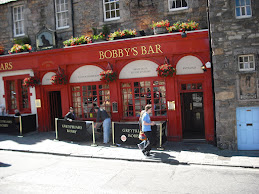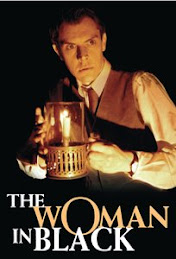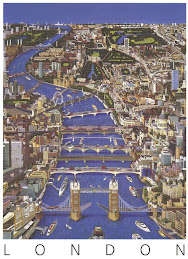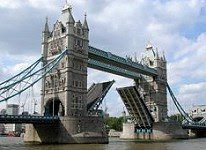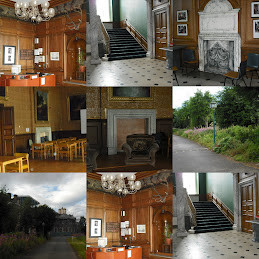
The Commute to Edinburgh and Introductions to Carol Marr, Library Officer:
Following a tour of the Dalkeith Library on a Tuesday morning, two days prior to leaving for the mini break to Paris, France to meet my daughter (sigh!), I took a bus ride with a classmate to Edinburgh on the ‘number 3 bus’, walked directly to the Elephant House for lunch and souvenir purchases, to land at my final destination of the Edinburgh Central Library on Princes Street.
In a historic city that is built around volcanic hills, a literary and cultural heritage is revealed through a wealth of resources and records made available in Edinburgh libraries. The Central library is in an Old World Heritage site close to the Royal Mile and is known for providing worldwide knowledge through its wealthy span of resources that seek to meet the information, learning and recreational needs of patrons of all ages.
Insight into the Library as a Communal Space, the Collection and Services:

My initial venture into the French Renaisssance style Carnagie library, built by Architect George Washington Browne, began by taking a few pictures and speaking with the security guard up front about the location and access to the library and the Resource Centre for the handicapped, given that is my research topic. As with all Carnagie libraries, above the entrance were the words 'Let there be light'. Once again in the front hall down the stairs, I read a large title made for the building, which read:
"The fear of the Lord is the beginning of wisdom and the knowledge of the Holy is understanding.
Take fast hold of instruction; let her not go; keep her for she is thy life.
Wisdom is the principal thing; therefore get wisdom and with all thy getting, get understanding and..."(From the Book of Proverbs).
I took a quick peek at the bust of Andrew Carnegie as I ventured up the main stairwell and came right back down. I read that Carnegie donated 25,000 pounds to the library which was doubled later! I stood in amazement and wonderment after thinking about Carnegie funding so many libraries around the world and once back to earth, was puzzled after climbing the sets of stairs as to how the disabled would enter the library or come upstairs. I later learned that there are areas of this library that are not handicapped accessible. I was relieved to learn that entrance to the Resource Centre for special needs populations was accessible from the ground level and was located next door to the library, being connected and not isolated from the library core. Items from the collection could be brought to the patrons from this point, after a request is made in the resource centre.
With many different departments in this public lending library, similar to what can be found in public libraries in the United States, the collection at Edinburgh Central Library offers more than 850,000 items to browse through, with an option to borrow. The books available covered the gamut of many subject areas to suit all patron ages and tastes with free information and an enquiry service to assist all. Of profit for the patron community, one that expands well beyond the boundaries of the Scottish nation, is study space, Internet, email, PC services and access to the most current digital information reserves that are freely and abundantly furnished. The Central library also maintains collections of CDs, DVDs and audio books. Special services include guided tours, visits, talks and events with an offer of community meeting spaces.

The Edinburgh Central Library provides the city with local studies/research for local or family history information, with the contribution of census returns, Old Parish Registers, directories, local newspapers, free family history resources and digitized images on the “Capital Collections website”. Of importance and added value to Edinburgh patrons, Edinburgh City Archives is publicly available to offer supplementary facets of how their ancestors may have lived to include records such as:
• Education records
• Incorporated Trade records
• Dean of Guild Plans
• Town Council Minutes
• Parochial Board administrative and Poor House records
My tour guide, Mrs. Carol Marr, stated that the lower level of the library offered the largest known special collections in the world! A wonderful offer is the Fiction collection, where literature written in all languages is known to be represented. Interestingly, Mrs. Marr stated that parts of the collection can be rented by scholastic and community groups and organizations to promote literacy and learning. The sizable offer of talking books were mentioned to be available for the visually impaired and other special needs population groups, with no charge to patrons for audio if registered as being disabled at the library. This is a special membership that is available to patrons, with the offer of a library card that indicates this designation. As we walked through the stacks, I noticed several long bookshelves of large print items. I also passed through a generous supply of travel guides, newspapers and teen book displays. Of importance for Mrs. Marr to mention was the fact that the Young Adult, Children’s and Adult sections of the library were blended, as plans for constructing a new building as a separate division for the Young Adult and Teen collections was already in advanced planning stages as we spoke. Lastly, we passed the ‘Learning Centre’ with a lavish supply of computers for patrons to access on a daily basis.
The Resource Centre, for People with Additional Support Needs: Interview and Tour by Jim McKinzie
After a general tour of the collections, Mrs. Marr set up an interview with the Disabilities Services Officer and Librarian, Mr. Jim McKinzie. Prior to entering the facility, accessible from the main building, Mrs. Marr informed me that the Learning Centre is connected to the Resource Centre for community education and information technology/computer education. Mr. McKinzie then informed me that he has been in this particular position for eight years. On a grateful note, Jim stated that he has at least one Library Assistant to help out in the Resource Centre each day! The assistants come to him with full knowledge of the software made available to assist patrons. The software includes Microsoft software to include programs such as Word Processing, Excel, Powerpoint and Access. The Internet is also made free for the public in this zone of the library. The offer of screen magnification and speech output software is available to assist patrons in using the computer facilities. Jim stated that licensing for the speech software is a necessity. Also offered is a selection of equipment to read aloud documents and books, as well as a CCTV magnifier to enlarge photos and text up to 60 times magnification. The offer of an assortment of computer mice and keyboards designed to help the disabled was another advantageous service to patrons. All one needed to do was ‘book’ one-on-one staff support for special assistance and also for equipment to guarantee the availability and use of the equipment. I also learned that the Centre was fully accessible to wheelchair users, with a handicapped restroom nearby for patrons. The Resource Centre offered its own distinctive hours, removed from the main library, and is in full operation Mondays through Fridays, from 10 am to 1 pm and 2 pm to 5 pm.
The Resource Centre thoughtfully advertised the services using politically correct terminology of helping those with ‘additional support needs’. Over the eight years Jim has been employed in this centre, the hours have expanded from the very limiting hours of 2 pm to 4pm daily to the lengthier present day hours. Jim stated that there was a measured need, so the time was responsibly expanded. Of the 26 community libraries in Edinburgh, Jim said that there is only one other Resource Centre to offer similar services as what is offered at the Central Library. When questioning Jim as to the strengths, weaknesses, opportunities and threats of the library (SWOT), he offered that a major threat upon services several years back was when the scanning software was totally wiped out due to a new provider installation! This service has yet to be re-instilled and stated that adding a new provider can be a big threat in coordinating with the special needs services offered. It is an ongoing issue between the Resource Centre and the Information Technology (IT) Department, with many hurdles to overcome in the future, with a lack of sufficient communication or coordinative efforts between departments currently to meet with the needs of the library’s special needs populations. He expressed his frustrations in that it was as though the services provided by the Centre were not approached as being as important and I saw this as an opportunity for his position to aggressively advocate the value of the services today and into the future. Jim expressed his concerns with obtaining software with speaking functions as well, due to funding issues and current problems with the IT Department. According to Jim, the software that the Centre maintains is not working as well as it should, but the future looked promising to him.
Description of Special Needs Equipment Acquired, Designed to Serve in Unique Ways:
The library currently uses the Kurzweil System, which is scanning software for books and printed items such as letters, with Optical Character Recognition (OCR)software to read the text out loud for patrons. The centre offers hard speech recognition software called “Dragon Dictate”, but is seeking better software currently. Jim stated that when a patron gets referred to the Centre, an interview is conducted to understand more fully what the patrons needs are at the moment. The first thing that takes place when a patron comes in to use the services after being fully registered is teaching the "touch-type” method (FDSA type), which makes it easier to work with the patron.
Keyboards and Mice:
Of value to my tour of the Resource Centre and brief interview in Mr. Jim McKenzie’s office, he brought out some of the keyboards to demonstrate its use. There were one handed key boards for the disabled with only one functioning hand to manipulate the computer. Jim informed me that the odd shaped, ergonomic keyboard matched natural hand movement with a key arrangement that reduces strain and minimizes finger movement. This design is one that aids the disabled by alleviating the frustration of using a normal keyboard and thereby raising the speed when typing. Of interest to me was that there are left and right handed models used for touch typing. Another keyboard offered large keys that were either black or white for distinctiveness. Of aid to the visually impaired patrons, some of the keyboards had numbers and letters that were of opposing colours. Jim also showed me an example of a coloured keyboard in contrast to the black and white keyboard. He explained that for those patrons with vision disabilities, this keyboard control offered enhanced control with a built in screen reader called Voice Over. Other incredible options offered by this unique keyboard, was the ability to magnify the screen and spoken descriptions of what is on the screen! This keyboard was used in the Resource Centre for not only for those with low vision, but for the blind and patrons with learning difficulties. Another keyboard called the Orbitouch keyboard was called the "keyless" keyboard by Jim, to be used by the physically handicapped minus the use of functioning fingers or those with limited mobility or hand injuries (i.e. carpal tunnel syndrome). On this keyboard device, two sliding domes or dials for the right and left hands replace the mouse and keyboard to allow movement in any direction (not twisting!), similar to laptop track nubs, and keystrokes are created to type letters! This tracker ball system offers a wonderful alternative for the elderly as well and is quite popular in the Resource Centre.
Referrals to Edinburgh Central Library’s Resource Centre:
Because the Resource Centre is integrated with the Learning Centre and accessible by all Central Library patrons, oftentimes patrons feed into the technology zone to use the computers either by means of overflow from the main library or referred there by the library staff. Once inside, Mr. McKinzie and his staff may not initially know who has special needs as oftentimes it is not visible. He explained that the special needs patrons either come eventually to the staff to request more time or have many questions, which alerts them to the fact the individual has specific needs that the usual equipment or services does not provide them. Patrons feed to them in this sometimes indirect or direct manner and also feeds from the main library staff who refer them directly to the centre. Referrals also come from phone calls or email requests for more specialized assistance and service. Front house tours and classes at the library offer referrals to the Resource Centre as well. It is important to mention that many of the patrons that use the Resource Centre are elderly patrons. Jim stated that with two staff on board each day to assist patrons, more one-on-one service is valuably offered.
Needs of the Resource Centre at Edinburgh Central Library:
The current needs of the Resource Centre is to obtain a new DVD player, obtain the equipment to make text conversion into Braille and to fix the Doorbell that connects the front desk amplifier with the street door entrance to the Centre. I learned that this door remains locked. Jim stated that he was not entirely sure of why it must be kept locked from this outdoor entrance (must enter the Resource Centre from the Main Library entrance that feeds into the Centre; a longer distance for the special needs individuals) other than the liability of having it open and just to ensure that only library patrons are fed into the Resource Centre with security guards at the front entrance to the main library. He also mentioned that theft of the special needs equipment and the technology in the learning centre was most probably a big concern of the library. Jim said that they need a larger facility, especially since the tremendous growth during his employ at the Resource Centre. Of the main barriers in access to the Resource Centre, he stated that limited space in a growing Centre was a big concern and the IT Department not completely networking the Resource Centre to the main computers (a big, ongoing issue! Protection software for dyslexics diffused currently). Other needs are for more accessible toilets with ample space for durable medical equipment ‘DME’ (i.e. wheelchairs, walkers, safety bars, etc.).
On a positive note, Scotland’s National Disability and Information Service was updated to offer the library and other organizations that serve the disabled in Scotland membership packages of disability information, resources and an array of other supportive services for the organization in the offer of up-to-date and current disability information to clients. A helpline is made available as well as an informative website to assist with many questions concerning such things as equipment and local sources of advice and help for the special needs populations.
PHOTO ALBUM
Websites of Interest:
Edinburgh Central Library
Edinburgh Central Lending Library
Edinburgh Central Learning Centre
Scotland's National Disability Information Service




